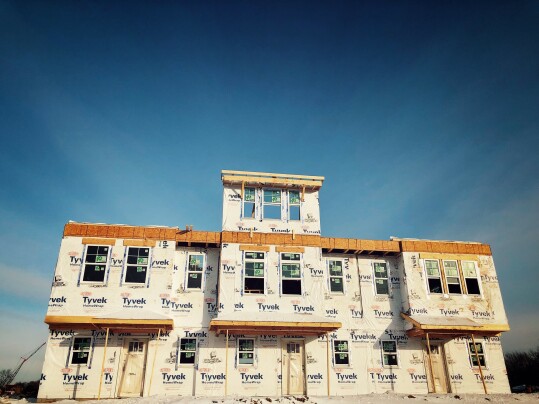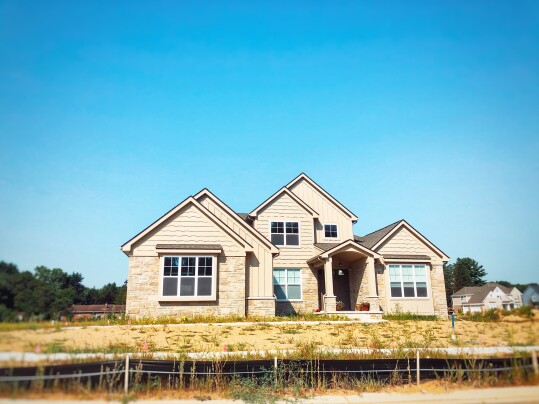Home prices are still rising. They’re increasing at a much slower pace than they were a few years ago but are above year-before levels in every region, according to new numbers from the National Association of Realtors. In fact, the median price for an existing home reached $391,700 at the end of 2023. That’s 3.5 percent higher than it was at the end of 2022. Lawrence Yun, NAR’s chief economist, says the number of homes for sale is expected to rise this year, which will help affordability and sales. “Sales were restrained due to limited inventory,” Yun said. “But increased home building, along with lower mortgage rates, will not only improve housing affordability but also help bring more homes onto the market in 2024.” As it is, price increases depend a lot on location. For example, the Northeast saw a 7.3 percent year-over-year increase, while the South saw prices up only 3.2 percent. The Midwest was up 4.7 percent, while the West increased 4.2 percent. (source)
Archive for February 2024
National Median Existing Home Price Hits $391,700
Single-Family Permits Climb Amid January Downturn
New home construction numbers aren’t the first thing prospective home buyers check when thinking about buying a home. Current listings, home prices, and mortgage rates are more likely starting points. But the number of new homes being built affects buyers, whether they know it or not. For one, the pace of new home construction can help moderate price increases, as more new homes add to overall supply, which reduces competition and limits price spikes. In other words, if more new homes are being built, it’s good for buyers whether they are shopping for a new or an existing home. So what’s happening in the new home market these days? Well, according to the latest numbers from the U.S. Census Bureau and the Department of Housing and Urban Development, new residential construction fell in January. A large share of the downturn was due to declining multi-family construction. Single-family home construction was also down but the number of permits authorized to build new homes increased 1.5 percent from the month before. Rising permits are an indicator of future construction numbers which means the increase could be a sign that winter construction declines may soon turn into gains as spring approaches. (source)
Home Builder Confidence Continues To Rise
Home builders know the housing market. They have to, after all. Their business depends on knowing where and what buyers want. That’s why the National Association of Home Builders takes a monthly measure of how confident home builders feel about the market. The NAHB’s Housing Market Index measures builder confidence on a scale where any number above 50 indicates more builders view conditions as good than poor. In February, the index saw its third consecutive monthly increase, rising four points to 48. Alicia Huey, NAHB’s chairman, says decreasing mortgage rates have boosted optimism. “Buyer traffic is improving as even small declines in interest rates will produce a disproportionate positive response among likely home purchasers,” Huey said. “And while mortgage rates still remain too high for many prospective buyers, we anticipate that due to pent-up demand, many more buyers will enter the marketplace if mortgage rates continue to decline this year.” (source)
Average Rates Move Higher In Latest Survey
Average mortgage rates moved higher last week, according to the Mortgage Bankers Association. Its Weekly Applications Survey found rates up for 30-year fixed-rate loans with both conforming and jumbo balances, loans backed by the Federal Housing Administration, 15-year fixed-rate loans, and 5/1 ARMs. The increases contributed to a 2.3 percent drop in mortgage application demand for both refinance and purchase loans. Joel Kan, MBA’s vice president and deputy chief economist, says rates are now at the highest level so far this year. “Application activity was weaker last week, as mortgage rates moved higher across the board,” Kan said. “The 30-year fixed mortgage rate was up to … the highest rate since early December 2023.” The MBA’s weekly survey has been conducted since 1990 and covers 75 percent of all retail residential mortgage applications. (source)
Mortgage Credit More Available In January
The Mortgage Bankers Association’s monthly measure of credit availability keeps track of how easy or difficult it is for borrowers to get a loan. Any increase in the Mortgage Credit Availability Index indicates that credit has loosened, while a decline means lending standards and loan programs have tightened. In other words, if the index is increasing, that’s good for prospective borrowers, and according to the most recent results, it is. In fact, the MBA’s index saw a 0.7 percent increase in January. Joel Kan, MBA’s vice president and deputy chief economist, says credit supply improved but remains tight. “There was a slight increase in credit availability in January, driven by a greater number of conventional loan program offerings,” Kan said. “However, overall credit availability remained close to 2012 lows, and the conventional index was close to its record low in the series dating back to 2011.” (source)
Rising Foot Traffic A Good Sign For Spring
Foot traffic is a great way to measure how active home buyers are in the market. You can tell a lot about where buyers are looking to live, and the homes they’re most interested in, by looking at how many home showings are being scheduled. The National Association of Realtors tracks home showings each month in an effort to gauge buyer demand and market activity. According to the most recently released numbers, foot traffic was up at the end of last year. In fact, showings were 5 percent higher year-over-year in December. The numbers show the greatest gains were in the South, where home showings rose 12 percent from year-before levels. The Midwest followed with an 8 percent gain. The increased activity is an encouraging sign, as buyer demand typically slows in the winter – and especially during the holidays. It’s also an indication that Americans are eager to shop for homes, which bodes well for the upcoming spring season when buying activity typically heats up. (source)
Affordability Improves After Last Year’s Lows
Naturally, affordability is a top factor among home buyers. After all, whether or not you can afford to buy a home is the first question you have to answer before beginning the buying process. That’s why 2023 was a slow year for the housing market. Affordability was at a low. In fact, according to the National Association of Home Builders’ Housing Opportunity Index, affordability during the fourth quarter of last year was at its lowest level in more than a decade. Fortunately, though, conditions have already improved. Alicia Huey, NAHB’s chairman, says she expects further gains this year. “Affordability conditions should show some gradual improvement this year, as mortgage rates peaked in the fourth quarter of 2023 …” Huey said. It’s true. Rates peaked in October of last year and have fallen significantly over the past few months. That, along with expected inventory gains this year, has most market forecasts calling for improved affordability conditions this spring selling season and beyond.







